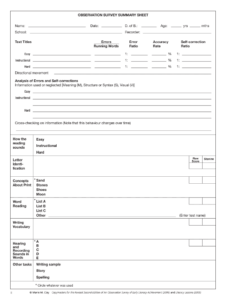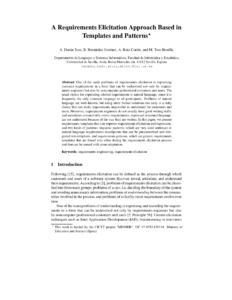Requirements elicitation is the process of gathering, understanding and documenting the requirements of a system from its stakeholders. It is a crucial phase in the system development life cycle, as it provides the foundation for all subsequent project activities. A well-defined requirements elicitation questions template can help ensure that all relevant requirements are captured and documented in a clear and concise manner.
There are many different types of requirements elicitation techniques, each with its own advantages and disadvantages. Some common techniques include interviewing, workshops, document analysis, and observation. The best technique or combination of techniques will vary depending on the specific project and the stakeholders involved.
Questions to Ask During Requirements Elicitation
The following are some general questions that can be used as a starting point for requirements elicitation:
- What are the business goals and objectives of the system?
- Who are the users of the system and what are their needs?
- What are the functional and non-functional requirements of the system?
- What are the constraints and limitations of the system?
- What are the risks and assumptions associated with the system?
In addition to these general questions, it is important to tailor the requirements elicitation questions to the specific project and stakeholders involved. For example, if the system is a new product, then the questions should focus on understanding the target market, the competitive landscape, and the unique selling proposition of the product. If the system is a replacement for an existing system, then the questions should focus on understanding the problems with the existing system and the desired improvements.
Using a Requirements Elicitation Questions Template
A well-defined requirements elicitation questions template can help ensure that all relevant requirements are captured and documented in a clear and concise manner. The template should be tailored to the specific project and stakeholders involved, and should include a mix of general and specific questions.
Once the requirements elicitation questions template has been developed, it can be used to guide the requirements elicitation process. The template can be used to create a checklist of questions to be asked, or it can be used to structure the interviews or workshops. By using a template, the requirements engineer can ensure that all relevant requirements are captured and documented in a consistent and organized manner.
A requirements elicitation questions template is a valuable tool that can help ensure the success of a system development project. By using a template, the requirements engineer can capture and document all relevant requirements in a clear and concise manner. This will provide a solid foundation for all subsequent project activities and will help to ensure that the system meets the needs of its stakeholders.
In conclusion, a well-defined requirements elicitation questions template is an essential tool for any requirements engineer. By using a template, the requirements engineer can ensure that all relevant requirements are captured and documented in a clear and concise manner. This will provide a solid foundation for all subsequent project activities and will help to ensure that the system meets the needs of its stakeholders.


